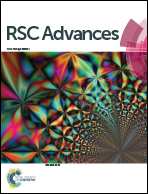Red-emitting, EtTP-5-based organic nanoprobes for two-photon imaging in 3D multicellular biological models†
Abstract
Biocompatible and biostable EtTP-5-loaded organic core–shell nanoparticles have been successfully evaluated for their potential as red-emitting fluorescent nanoprobes for two-photon imaging. Readily formed by Flash NanoPrecipitation, EtTP-5-based nanoprobes proved to penetrate well into multicellular spheroids and were easily imaged through several cell layers within these complex, 3D tissue models.


 Please wait while we load your content...
Please wait while we load your content...